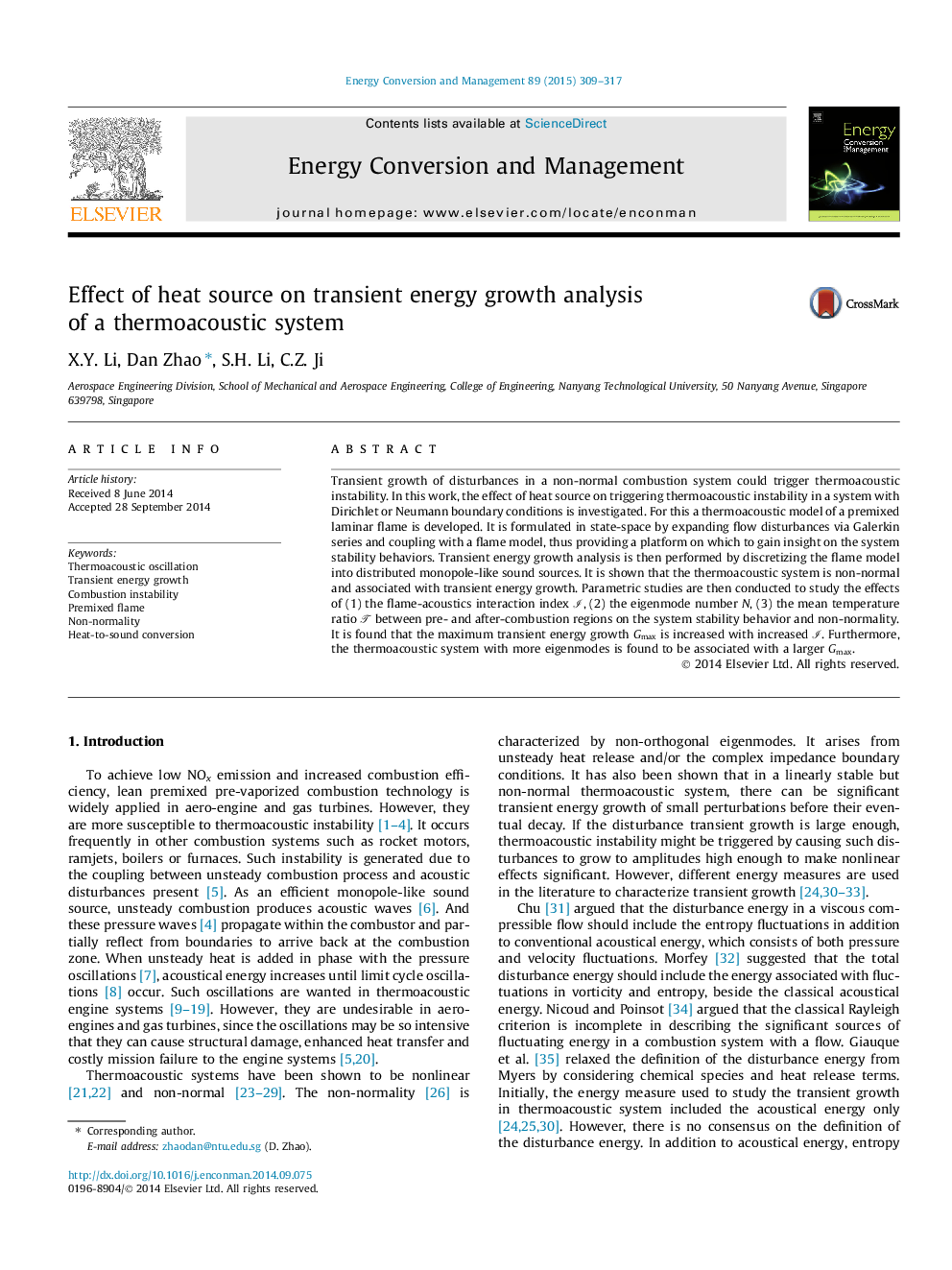| Article ID | Journal | Published Year | Pages | File Type |
|---|---|---|---|---|
| 7163767 | Energy Conversion and Management | 2015 | 9 Pages |
Abstract
Transient growth of disturbances in a non-normal combustion system could trigger thermoacoustic instability. In this work, the effect of heat source on triggering thermoacoustic instability in a system with Dirichlet or Neumann boundary conditions is investigated. For this a thermoacoustic model of a premixed laminar flame is developed. It is formulated in state-space by expanding flow disturbances via Galerkin series and coupling with a flame model, thus providing a platform on which to gain insight on the system stability behaviors. Transient energy growth analysis is then performed by discretizing the flame model into distributed monopole-like sound sources. It is shown that the thermoacoustic system is non-normal and associated with transient energy growth. Parametric studies are then conducted to study the effects of (1) the flame-acoustics interaction index I, (2) the eigenmode number N, (3) the mean temperature ratio T between pre- and after-combustion regions on the system stability behavior and non-normality. It is found that the maximum transient energy growth Gmax is increased with increased I. Furthermore, the thermoacoustic system with more eigenmodes is found to be associated with a larger Gmax.
Keywords
Related Topics
Physical Sciences and Engineering
Energy
Energy (General)
Authors
X.Y. Li, Dan Zhao, S.H. Li, C.Z. Ji,
